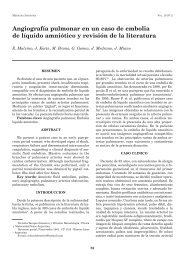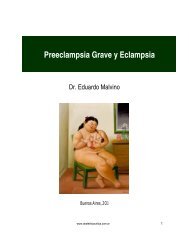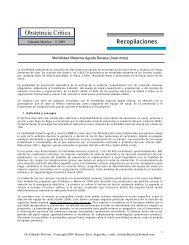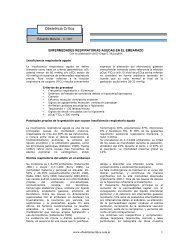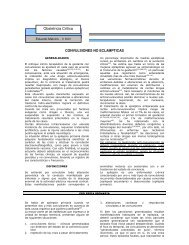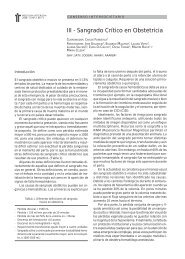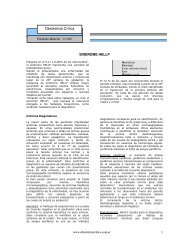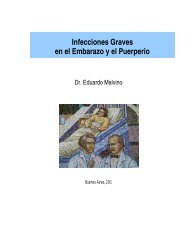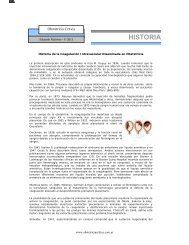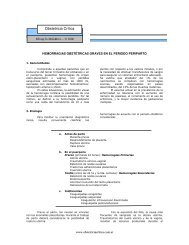Abstracts â 2008 - Obstetricia CrÃtica
Abstracts â 2008 - Obstetricia CrÃtica
Abstracts â 2008 - Obstetricia CrÃtica
You also want an ePaper? Increase the reach of your titles
YUMPU automatically turns print PDFs into web optimized ePapers that Google loves.
Department of Obstetrics and Gynecology, Logan Health Service, Logan,Queensland, Australia. yyyap@optusnet.com.auObstet Gynecol. <strong>2008</strong> Mar;111(3):805-7.ACOG Committee Opinion No. 402: Antenatal corticosteroid therapy forfetal maturation.American College of <strong>Obstetricia</strong>ns and Gynecologists Committee on ObstetricPractice.Obstet Gynecol. <strong>2008</strong> Mar;111(3):732-8.Peripartum hysterectomy: 1999 to 2006.Glaze S, Ekwalanga P, Roberts G, Lange I, Birch C, Rosengarten A, Jarrell J,Ross S.Department of Obstetrics and Gynaecology, University of Calgary, Calgary,Alberta, Canada.OBJECTIVE: To estimate the rate of peripartum hysterectomy over the last 8years in Calgary, the primary indication for peripartum hysterectomy (defined asany hysterectomy performed within 24 hours of a delivery), and whether therewas an increase in the rate of peripartum hysterectomy during that time.METHOD: Detailed chart review of all cases of peripartum hysterectomy, 1999-2006, including previous obstetric history, details of the index pregnancy,indications for peripartum hysterectomy, outcome of the hysterectomy, and infantmorbidity. RESULTS: The overall rate of peripartum hysterectomy was 87 of108,154 or 0.8 per 1,000 deliveries. The primary indications for hysterectomywere uterine atony (32 of 87, 37%) and suspected placenta accreta (29 of 87,33%). After hysterectomy, 46 (53%) women were admitted to the intensive careunit. Women were discharged home after a mean 6-day length of stay. The rateof peripartum hysterectomy did not appear to increase over time. CONCLUSION:Our population-based study found that abnormal placentation is the mainindication for peripartum hysterectomy. The most important step in prevention ofmajor postpartum hemorrhage is recognizing and assessing women's risk,although even perfect management of hemorrhage cannot always preventsurgery.Obstet Gynecol. <strong>2008</strong> Mar;111(3):723-31.Hospital, simulation center, and teamwork training for eclampsiamanagement: a randomized controlled trial.Ellis D, Crofts JF, Hunt LP, Read M, Fox R, James M.Department of Obstetrics and Gynaecology, North Bristol NHS Trust, SouthmeadHospital, Bristol, United Kingdom.OBJECTIVE: To compare the effectiveness of training for eclampsia in localhospitals and a regional simulation center, with and without teamwork theory.METHODS: This study is a randomized controlled trial of training in localhospitals and in a simulation center in the United Kingdom. Midwives andobstetricians working at participating hospitals were randomly assigned to 24teams. Teams were randomly allocated to training in local hospitals or at a



